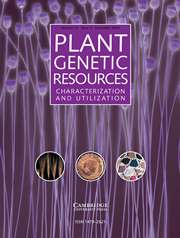Article contents
Role of genetic resources and molecular markers in Mucuna pruriens (L.) DC improvement
Published online by Cambridge University Press: 28 March 2016
Abstract
Mucuna pruriens (L.) DC is a tropical legume cover crop with promising nutritional and agronomic potentials. It is also a key source of 3,4 dihydroxy-L-phenylalanine (L-Dopa) – a precursor of dopamine used in the treatment of Parkinson's disease. However, lack of well-characterized germplasm plus poor accessibility to genomic resources has hindered its breeding programs. Furthermore, the cause and effect of various biotic and abiotic stresses impacting yield is also little studied. Systematic collection and evaluation of Indian germplasm by our group revealed presence of a diverse gene pool in India that can support a variety of breeding needs. The stability of L-Dopa trait across environments examined through Genotype and environment (G × E) interaction studies, as well as feasibility check on barcoding and phylogenetic analyses based on karyotype and conserved nuclear and chloroplast genes showed promising outcome. Germplasm screening for select biotic abiotic stresses identified resilient genotypes. Advances in use of DNA markers for diversity analysis, linkage map development, tagging of genes/quantitative trait loci for qualitative and quantitative traits, and progress in genomics are presented.
- Type
- Research Article
- Information
- Plant Genetic Resources , Volume 14 , Special Issue 4: Evolving trends in plant based drug discovery , December 2016 , pp. 270 - 282
- Copyright
- Copyright © NIAB 2016
References
- 8
- Cited by


